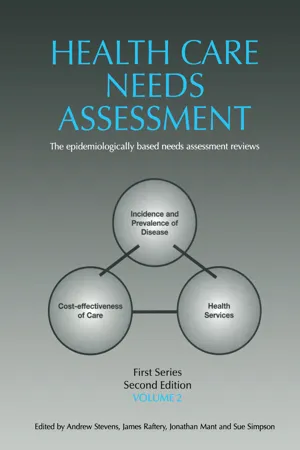Statement of problem
People with learning disabilities have a wide range of social and heath care needs. They may also have coexisting conditions that can contribute to need, including physical or developmental disabilities, mental and physical ill-health and a range of behavioural problems. It is often the presence of these conditions that defines need for services.
The following are basic understandings that should underpin the commissioning and delivery of services.
•People with learning disabilities should be recognised as individuals who have the same citizenship rights as the rest of the population.
•Care is increasingly in the community, and family members often provide the majority of care.
•Most individuals will predominantly need social care services. However, health services play a significant role to ensure that all needs are met.
•Disability may lead to the need for additional and/or specialist support/benefits and services. However, generic services should always be accessible to people with learning disabilities.
•Service planning must be based on partnership working, including health, social care, education, housing, users and their carers. This is particularly important at transition points in people’s lives, such as leaving full-time education.
•Service planning and commissioning must include the needs of carers, particularly given the increased life expectancy of many people with learning disabilities and the inevitable ageing of their carers.
•Collaboration between commissioners will be required, as some conditions affect relatively small numbers of individuals within each primary care trust (PCT) population.
Policy context
Central themes in national health care policy include increasing the extent of community-based care and ensuring equivalence of service receipt between subgroups of the population. In order to promote joint working there is a requirement for health and local authorities, with partner agencies, to produce a joint investment plan (JIP) for learning disabilities. Local authorities lead this process. The objective of the JIP should be to ‘promote independence and social inclusion’. In 2001, a national strategy for learning disabilities, Valuing People,296 was published by the Department of Health, giving further guidance on the organisation and development of services. It emphasised four key principles – rights, independence, choice and inclusion – that should underpin the way forward.
Analysis of health and social care provision suggests that there is still a significant amount of work needed to ensure that people with learning disabilities have access to high-quality, comprehensive health and social care. Collaboration between commissioners will be essential.
Definitions and classification
The term ‘learning disability’ commonly refers to a group of individuals with a history of developmental delay, a delay in or failure to acquire a level of adaptive behaviour and/or social functioning expected for their age, and in whom there is evidence of significant intellectual impairment. Many terms are used with little consensus. Classification and terminology are important, both with respect to acceptability to those with learning disability, and also in order to allow accurate communication between those who plan, provide and evaluate services. Lack of standardisation of terms hampers progress. Comparison of research data is difficult, and the translation of research findings to local services, where case-mix may be significantly different, is hard to achieve.
Classification needs to be multi-axial in order to describe the complexity of need. Classification systems generally combine a measure of intellectual functioning (usually intelligence quotient [IQ]) with measures of social and behavioural functioning. The main systems are ICD-10, DSM-IV and the American Association on Mental Retardation Manual of Definitions.
In all, low IQ must be present during the developmental period of life. Other conditions in which IQ is lowered are excluded, e.g. acquired head injuries, schizophrenia and dementia.
The abbreviation ‘PWLD’ is used here to refer to people with learning disabilities or difficulties.
The use of categories
There is no simple way of categorising PWLD into groups that need a particular service; individual need should dictate the level and type of service input. An individual’s social, behavioural and learning abilities must be assessed, in conjunction with measures of intellectual capability. Intellectual impairment refers to a loss of intellectual function. Severe intellectual impairment refers to those with an IQ of < 50 and mild intellectual impairment covers IQs of 50–69 (see Section 3 for discussion of the relationship between intellectual impairment and learning disabilities).
Categories used in this chapter include:
•conditions that are often, or always, associated with intellectual impairment, e.g. Down’s syndrome and fragile X syndrome
•impairments/disabilities that occur more frequently in PWLD, e.g. epilepsy and cerebral palsy; developmental disorders, e.g. autistic spectrum disorders (ASD) and mental illness
•losses of function, e.g. hearing and mobility problems
•restriction of participation, e.g. social difficulties with housing or relationships and the impact on carers and families, such as inability to maintain paid employment or to sustain family relationships.
Aetiology
The aetiology of learning disabilities can be subdivided into those conditions that arise at conception (whose prevention lies before conception) and those that arise during pregnancy, labour and after birth. Aetiological agents fall into three main categories: genetic, infective and environmental.
No aetiological cause is found in approximately 30% of cases of severe learning disabilities. The same is true for the majority of cases of mild learning disabilities. Iodine deficiency disease is the commonest cause of severe learning disabilities worldwide. In the UK, the majority of cases are due to genetic factors, non-inherited Down’s syndrome and X-linked disorders, such as fragile X, being the most common. Maternal alcohol consumption appears to play a significant role in the developme...
